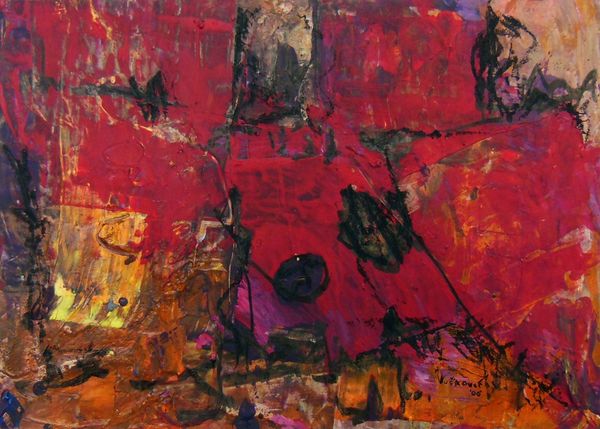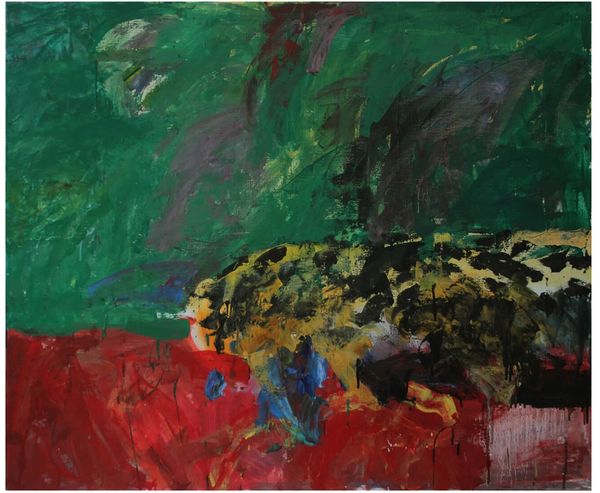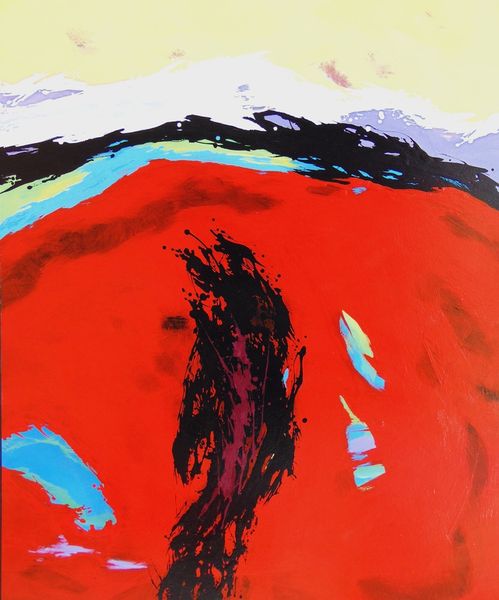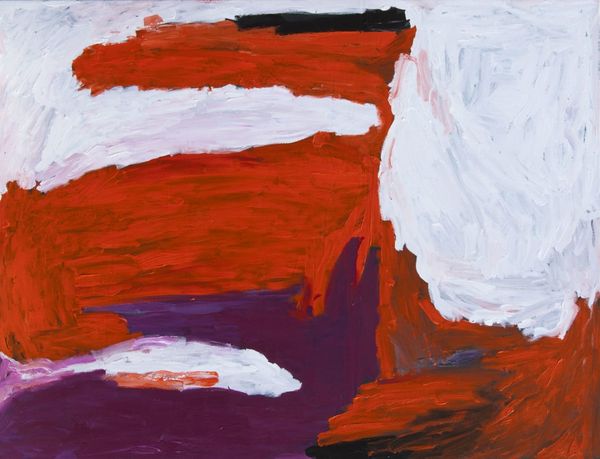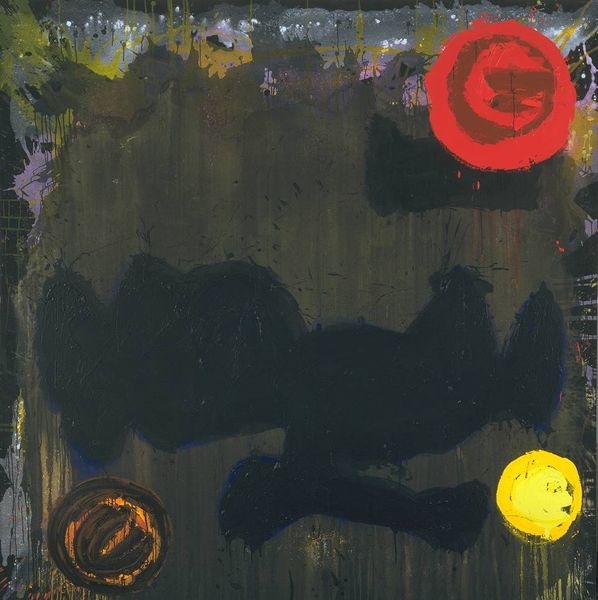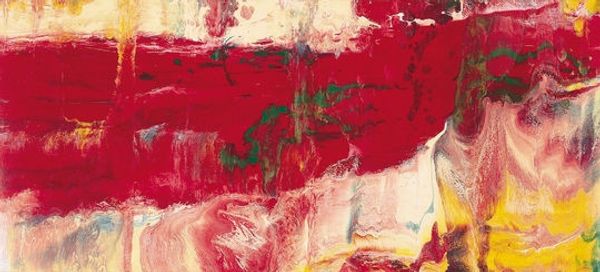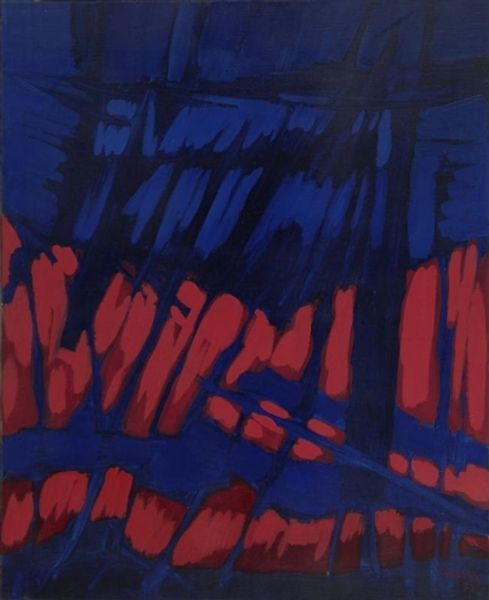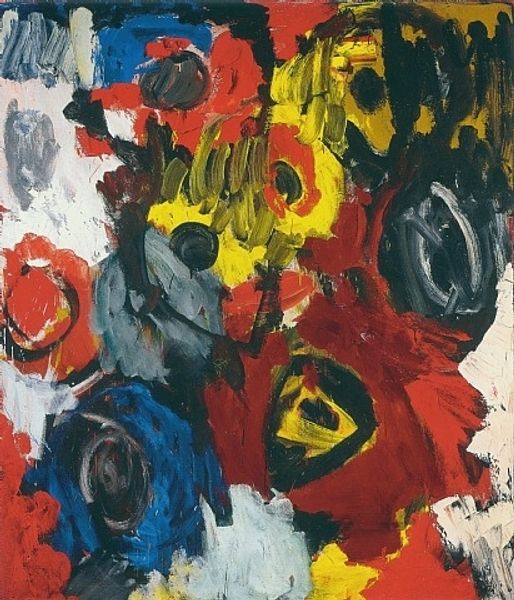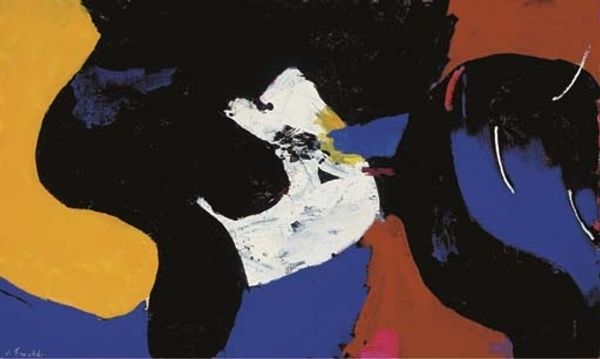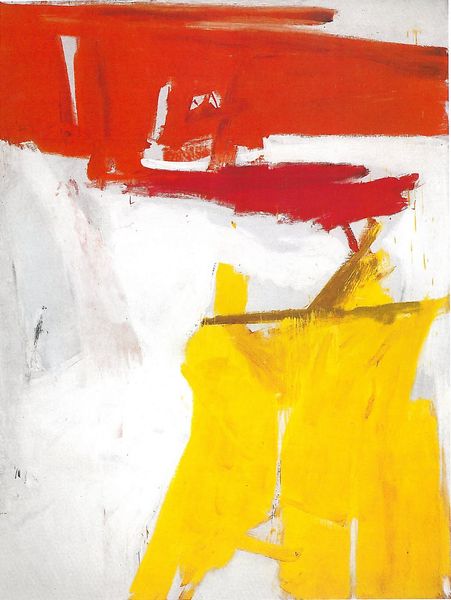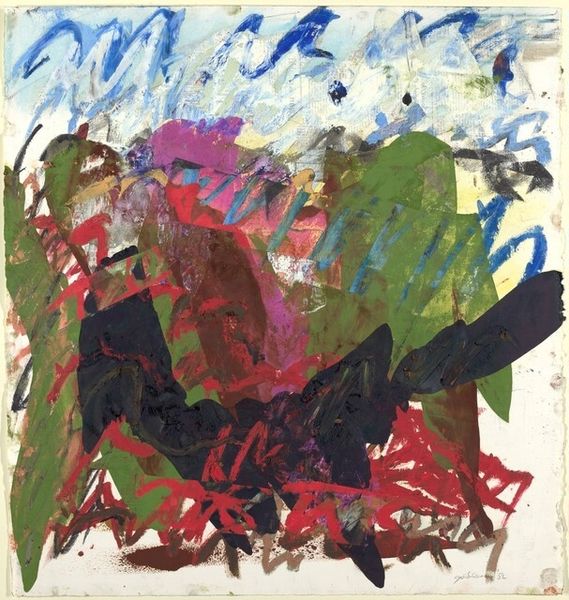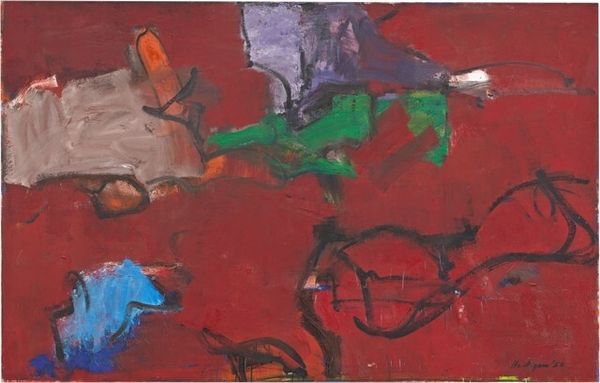
Copyright: Pat Lipsky,Fair Use
Editor: Here we have Pat Lipsky's "Bumble Bee" from 1973, rendered in acrylic paint with impasto. I'm immediately drawn to the aggressive textures and how the clashing colours seem to vibrate on the canvas. How would you interpret the dynamics at play here? Curator: The painting offers a rich formal vocabulary to decode. Consider how the heavily worked surface and bold chromatic interactions between the central cluster of blues, yellows and greens, and the surrounding sea of red contribute to an overall sense of dynamic tension. Lipsky employs impasto, a technique where paint is thickly laid on the surface, almost sculptural. Does the artist’s gestural mark-making create a dialogue between colour and form? Editor: That's a great way of putting it, a dialogue. It's almost as if the texture becomes another layer of meaning, or even resistance, to the colours. It keeps the colours from simply being flat and representational. Do you see anything in the composition, such as where she places the colours on the canvas? Curator: Note how the central concentration of colour is strategically positioned; does its placement yield clues as to the overall structure and balance, or indeed imbalance? Consider too how the surrounding expanse of red, aggressively applied, creates a frame that serves to simultaneously contain and liberate this burst of concentrated chromatic energy. The brushstrokes give insight into the intentions and choices made by Lipsky. Editor: So it’s a carefully constructed tension rather than a spontaneous outpouring, and it is also mediated by colour placement, thickness and layering? Curator: Precisely. The title might suggest a simple depiction of nature. However, the painting itself proposes a sophisticated exploration of abstraction, color theory, and the physical properties of paint itself. Editor: I'm now viewing "Bumble Bee" through a totally different lens, thank you! Curator: And I now better appreciate the balance between chaos and constraint within it!
Comments
No comments
Be the first to comment and join the conversation on the ultimate creative platform.
